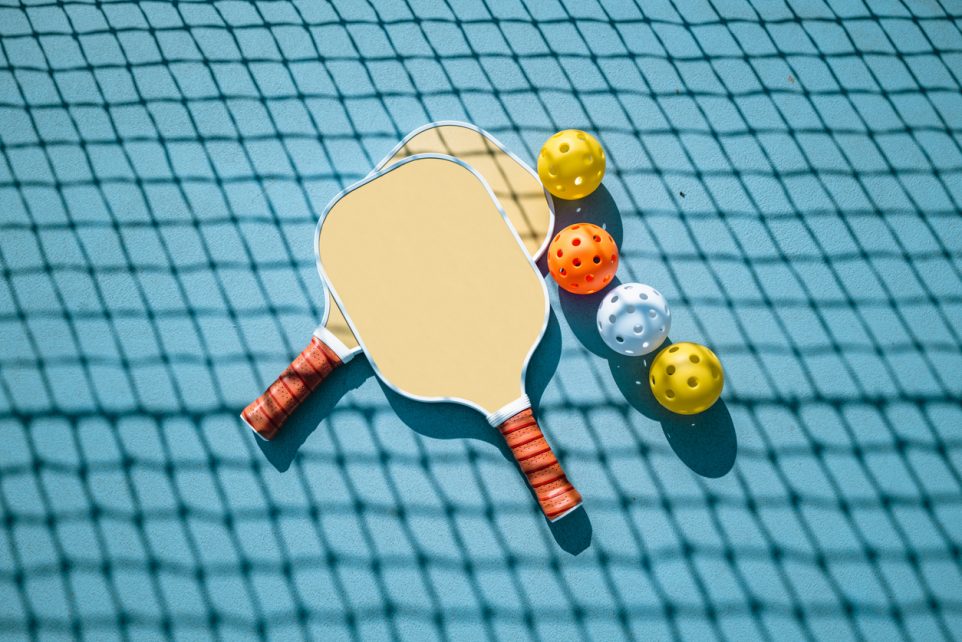Common Beginner Mistakes in Pickleball and How to Fix Them

If you’re new to pickleball, you’re probably excited to get on the court and start playing. However, like any sport, there are common mistakes beginners tend to make. Understanding these mistakes and learning how to avoid them can significantly improve your game and make you a more competitive player. Here are some of the most common mistakes beginners make and how to correct them.
Scooting Up After the Serve
One of the most common mistakes is scooting up after serving. When you serve, it’s tempting to move forward, but this can leave you vulnerable. Advanced players often hit deep returns to make your third shot difficult. Stay back after serving to be ready for that deep return. If you move up too quickly, you’ll find yourself scrambling to hit a ball that lands behind you, which isn’t ideal.
Getting Too Fancy with Spin
Spin can be a game-changer in pickleball, especially at advanced levels. However, for beginners, trying to incorporate too much spin can lead to inconsistent shots and errors. Focus on mastering the basics first—consistent, clean hits. Once you have a solid foundation, you can start experimenting with spin. If you’re trying to use spin shots and they’re not working, it might be time to put them on the shelf temporarily and revisit them later.
Smashing Balls That Are Too Low
It’s easy to get impatient and try to smash balls that are too low. This often leads to errors, such as hitting the ball into the net. Instead of rushing to smash, remember the mantra “live to dink another day.” If the ball is too low, let it bounce and hit it softly. This patience will pay off in the long run, allowing you to maintain control and avoid unnecessary mistakes.
Kitchen Faults
Understanding the kitchen rules can be tricky for beginners. The key is to remember that you can’t be in the kitchen (also known as the non-volley zone) or have been in the kitchen when you volley the ball. Think of it in terms of past, present, and future—you can’t have been, be, or will soon be in the kitchen when you hit a volley. To avoid faults, use your legs to squat and maintain balance rather than leaning forward.
Serving Technique
A common issue with serving is the flipping of the paddle, which can lead to inaccurate serves. Instead of flipping your hand over, try to think of flipping a pancake over your shoulder. This motion helps you make solid contact with the ball, resulting in a more powerful and accurate serve. Remember, practice makes perfect, so keep working on that smooth, controlled motion.
Not Taking Centerline Shots as the Forehand Player
In pickleball, the forehand shot is generally more powerful and controlled than the backhand. As a result, the forehand player should take shots down the middle. If the ball is coming down the center, it’s your job as the forehand player to step in and take the shot. This strategy will help maintain consistency and control during rallies.
Not Letting Balls Go Out
A big mistake is hitting balls that are likely to go out of bounds. When you’re at the kitchen line, be mindful of balls coming at your shoulders or higher. Many of these will go out if you let them. Develop the discipline to let these balls go out, and you’ll gain easy points.
Not Getting to the Kitchen
After the serve or third shot, many beginners hesitate to move up to the kitchen line. This hesitation can put you at a disadvantage. Make it a habit to step forward after your third shot or return serve. This movement positions you better for volleys and dinks, making it harder for your opponents to score.
Backing Off the Line When You Don’t Need To
Backing off the kitchen line unnecessarily can put you in a defensive position and expose you to more challenging shots. While there are times you might need to step back, generally, you should stay close to the kitchen line. If you find yourself backing off, work your way back up quickly to maintain a strong position.
Hitting the Ball Too Hard
Finally, understanding the pace of your shots is crucial. Hitting the ball too hard can lead to pop-ups, giving your opponents easy opportunities to attack. If your opponent hits a hard shot, use a softer touch to control the return. Conversely, if the shot is soft, you may need to hit it harder. Balancing the pace of your shots based on the incoming ball will help you maintain control and consistency.
Trustworthy Insights for You
With years of combined expertise in online publishing, OvertimeReviews embodies the lessons learned from SEO strategies to paid advertising experiences. We've navigated the highs and lows, and our goal remains clear: to equip readers with comprehensive information they can trust.
